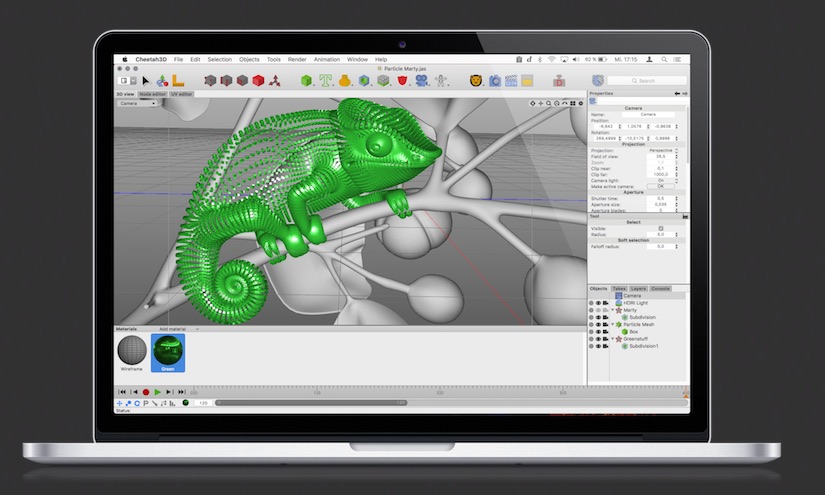
- #HOW DO I USE PAINTBRUSH FOR MAC HOW TO#
- #HOW DO I USE PAINTBRUSH FOR MAC SKIN#
- #HOW DO I USE PAINTBRUSH FOR MAC PATCH#
- #HOW DO I USE PAINTBRUSH FOR MAC MAC#
The Clone Stamp tool in Photoshop and Luminar is designed to clone objects, but it can also heal parts of a photo.
#HOW DO I USE PAINTBRUSH FOR MAC HOW TO#
Now that you know how to use the Clone Stamp to remove or duplicate objects in your photos, go ahead and download a free trial of Luminar and give it a shot yourself! In just four simple steps, you can make lamb clones appear in your photo. Once you’re happy with the cloning, click Apply to return to the main editing menu.Īs you can see, it’s straightforward to learn how to use the Clone Stamp in Luminar. As you move your cursor over the area, you’ll see the selected object being cloned. The final step in using the Clone Stamp to duplicate the object is simply to click and hold down your mouse button while you paint over the area where you want the object to be cloned. All you need to do now is paint over the object that you want to clone elsewhere.
#HOW DO I USE PAINTBRUSH FOR MAC MAC#
Pressing the Option key on your Mac will change your cursor to a crosshair.
#HOW DO I USE PAINTBRUSH FOR MAC PATCH#
Specifically, choose the area that you want to add something to (an empty patch of grass, in this example) and the object that you want to clone into that area (in our case, a lamb).Īfter making your mental selections, it’s time to move ahead. To start, identify what you want to edit. If you’d like to add more foliage to the background of an image, use the foliage as a source. If there’s a power line in the sky, use the sky as the source.
#HOW DO I USE PAINTBRUSH FOR MAC SKIN#
If there’s a blemish you’d like to get rid of, use nearby skin as the source. You can apply this knowledge to any scenario. Luminar can be bought for a one-time fee, unlike Photoshop, making it an affordable alternative.īy choosing different areas of grass as the source, you can easily remove unwanted trees from the photograph. Learning how to use Clone Stamp in Luminar is just as easy as in Photoshop. Luminar has its own Clone Stamp tool that can help you easily remove unwanted objects or add clones of objects. It’s a direct competitor to Photoshop and has many of the same features. The Photoshop Clone Stamp is arguably the most widely used because of Photoshop’s great reputation, but there are other, simpler programs you can use as well. There are many different photo editors that you can use depending on your needs. But once you learn how to use the Clone Stamp tool, you’ll be able to quickly and efficiently edit your images. It can be difficult to make cloned images look real at first. The Clone Stamp tool replaces pixels with pixels, making edits look more seamless than if you were to use a paintbrush tool. By choosing a soft brush, you won’t get any hard edges that make it obvious the image was edited. Learning how to use the Clone Stamp makes it easy for you to copy and paste different parts of an image regardless of their size. You can change the size, softness, and opacity of the brush. The Clone Stamp tool essentially allows you to copy one part of a photograph and brush it onto a different part. Learning how to use the Clone Stamp tool can drastically change your editing. Likewise, blemishes can be magically removed with basic photo retouching. Is there a tree growing out of someone’s head? A few clicks and - voilà! The tree has been replaced with a beautiful blue sky. Luckily, photo editing programs have made it easy to get rid of unwanted objects fast.

It can be especially frustrating for those who are photographing important events such as weddings. But when you copy the photo to your computer, you realize there’s a tree coming out of your friend’s head! Noticing an unwanted object in a photograph is extremely frustrating, especially if it isn’t easy to recreate the shot.

Let’s say you’ve just taken a beautiful portrait of your best friend and you’re excited to get back home and start editing. Whether it’s a stray piece of paper on a desk or a speck of sensor dust ruining a portrait, there are times when part of an image needs to be removed. Almost all photographers face the problem of unwanted objects in their photos from time to time.


 0 kommentar(er)
0 kommentar(er)
